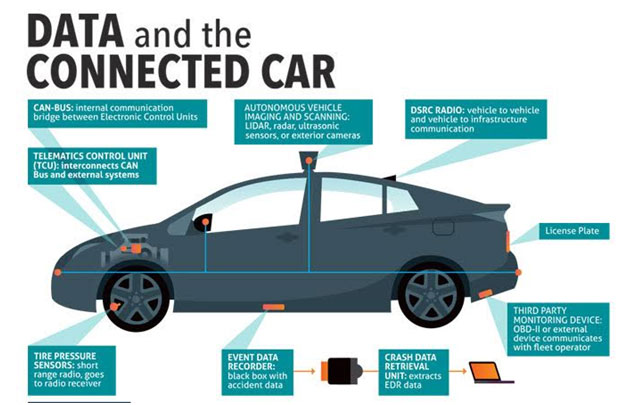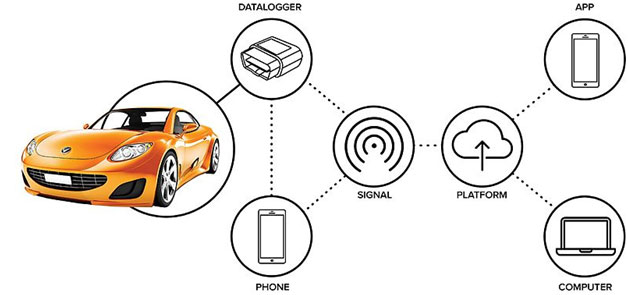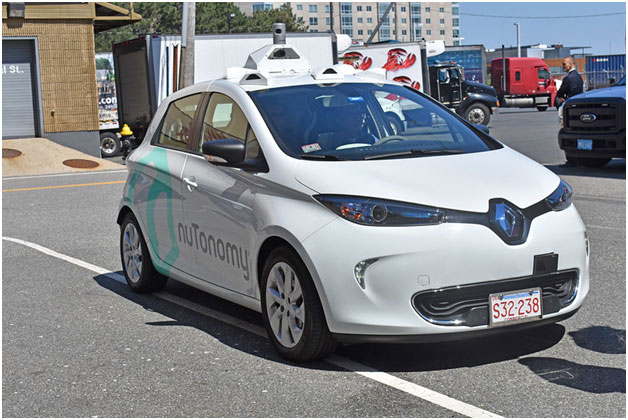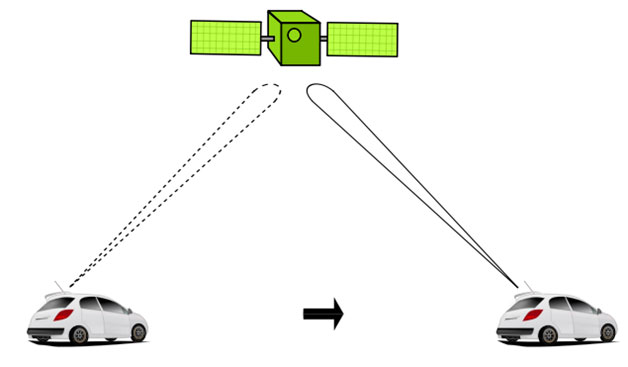
Image Credit: Future of Privacy Forum
The Internet of Things (IoT) has become one of the most important technologies of this era.
The hyperconnected network of physical devices, or “things”, occupies our world. These everyday objects are embedded with sensors and software that exchange data with other devices and systems via the Internet.
These ubiquitous … things … have invaded every industry – from kitchen appliances to thermostats and home security cameras to, yes, automobiles.
With billions of these devices already in use and billions more expected in the next few years, the potential for the digital world to transform the automobile industry in new and interesting ways is practically guaranteed.
What Does a Connected Car Mean?
Connected cars – or at least their onboard systems – can communicate with the Internet and outside systems. This makes them an endpoint in the Internet of Thingssimilar to every computer and smartphone connected to the web.
This makes your car both a generator and a consumer of information.
Megabytes of collected data are transmitted daily back to supporting industries. IoT companies hope that this mass of data will prove useful in a variety of ways.
This information is mined to design safer roads and infrastructure. It can help predict equipment malfunction before it happens. Companies also use the data to improve the driver and passenger experience.

Image Credit: Danlaw Inc, CC BY-SA 4.0, via Wikimedia Commons
Benefits of Connected Cars and IoT Technology
There are quite a few benefits for both drivers and manufacturers when it comes to connected cars.
Software Updates
Modern cars are mobile computers. Like any laptop, there will be new software updates that need to be applied to improve and secure these automotive systems.
Traditionally, you would need to return to a dealer to have these installed. However, a connected car could receive the new software code “over the air”. OTA updates remove the inconvenience for the owner and the added costs for manufacturers.
Over-the-air updates to software-reliant systems save more than time and money. The safety factor is important too.
Manufacturers can move more quickly when vulnerabilities or liabilities are identified. IoT allows for the updates to happen immediately – potentially fixing hundreds or thousands of vehicles at once.
The update process has the potential to deliver a more efficient car over the course of its life as these software updates are applied.
Navigation Systems
Driving the car is often only half the battle. There are other cars to contend with on the road. Unexpected delays and detours can add time and frustration. IoT can help with these problems too!
Advanced GPS can pinpoint a car’s exact location down to within a handful of feet. When you combine that accuracy with providers’ location services and databases of collected information, you can truly begin to benefit from all that IoT provides.
For example, with connections to a state’s list of road construction projects and car-to-car communication, a driver can be presented with alternate routes or warnings when needed.
Turn-by-turn navigation can get you to where you need to go regardless of traffic, weather, or other unexpected obstacles.
Once you are near your destination, you’ll need a parking spot, correct? Automotive IoT can help solve this issue. Using mapping data, some smart parking companies hope to provide predictive analysis of traffic patterns.
Such data could even assist civil engineers in planning more efficient traffic systems for the future.
Cost of Ownership
Connected cars can drive more efficiently, which means more money in the owner’s pocket. Fuel savings and improved traffic avoidance can keep the cost of owning a car lower.
You can often avoid expensive repairs to an automobile by maintaining the proper routine of scheduled maintenance. Onboard sensors can alert the owner at regular intervals or provide AI-driven diagnostics when problems do appear.
Tied in to cost of ownership is also the reduced threat of theft. Sensors in the car’s systems can detect unauthorized entry and sound an alarm. Tracking systems can also help to recover cars that are stolen.
Companies can also get in on the cost savings. Fleet management allows for real-time location tracking of company-owned vehicles. Statistics like fuel usage and traffic conditions may allow for more efficient routing of deliveries. Notifications can be sent to end consumers about the timing of their package delivery or the arrival of a field technician for an appointment.
Safety Measures
Being connected to the internet can serve to improve a driver’s safety. Emergency services and roadside assistance can be called with the push of a button with some subscription services.
Many of the benefits identified above also improve automobile safety. When you have more accurate data on traffic and road conditions, it can lead to a smoother and safer ride.
When you can predict when car components will need attention, action can be taken before it becomes a serious issue.
User Experience
A car connected to the Internet of Things offers a choice of options designed to improve the user’s experience. Anything within reach of the Internet is at your fingertips.
Streaming music and internet or satellite radio channels provide endless music and news. Streaming videos or movies can also help entertain passengers.
Some vehicles will have built-in wi-fi capabilities that connect to a telecommunication network. Passengers can connect their smart devices to this network and peruse the internet without needing to eat up their device’s data plan.

Image Credit: Metropolitan Area Planning Council/ flickr
What Can We Expect from Connected Cars?
IoT is a disruptive technology, meaning that it is a game-changer. Expect more and more manufacturers to add at least some IoT technology as standard equipment on their offered models.
With advances in sensors and artificial intelligence, don’t be surprised when the industry moves steadily toward more integration.
Navigation and communication increase the experience of driving which by its nature might feel isolating. When the power of the web is housed in your dashboard, you won’t feel alone anymore.
Diagnostics and predictive maintenance capabilities will continue to grow and improve. This helps cut costs for manufacturers and extend the life of the car. That makes it feel like a value-added benefit to the consumer since their automobile has a greater potential to maintain value.
Companies like Tesla and Google are experimenting with autonomous cars that drive themselves. These vehicles sit at the pinnacle of IoT automotive tech. As legislation and safety standards clear the way for these self-driving vehicles, expect more companies to research and develop this technology.
The Challenges Connected Cars Face
Of course, there are challenges that connected cars face. While the benefits of IoT create a long list, there is still a matter of public acceptance.
With any new technology, there can be an uphill climb to get the average person to adopt it. Add in the manufacturers who must consider the bottom line and it can create a space where the tried-and-true makes more financial sense and innovation must take a back seat.
The information age has brought a greater awareness of the value that data embodies. Data privacy is a hot topic and companies may be wary of wading into the shark-infested waters of potential litigation should data breaches occur.

Image Credit: OpenClipart / Public Domain
Examples of IoT in Connected Cars
The market is ripe for IoT diversity. Every entertainment provider and information source – collectively we might call them ‘infotainment’ – will consider how they can get a slice of the pie that encompasses the trillions-dollar global automotive industry.
Added to that are the companies looking to improve the performance of their fleets of vehicles. With machine learning and predictive maintenance, industries can improve the quality of their services.
Are There Any Safety Issues?
As with any technology, there is always the standard question of safety. Many of the IoT technologies mentioned are directly designed to increase the safety and reliability of vehicles.
But there is one factor that can increase risk – people.
Every new gadget creates the potential for distraction. Distracted driving is one of the leading causes of car wrecks and can be a real issue.
Drivers should use all features of a connected car appropriately and safely to protect themselves, their passengers, and other drivers on the road.
Automotive IoT Companies
The application of IoT in the automotive industry is endless. Some companies are already making great strides in providing services for connected cars.
The companies leading the pack in connected car tech fall into two categories – car manufacturers and tech companies.
Car manufacturers like Tesla, Toyota, and General Motors lead the pack in IoT integration. Expect this trend to grow further as time marches on.
Technology companies like Qualcomm, AT&T, Samsung, and Airbiquity have a major stake in getting their products into the automobiles we drive. When they get to the gate early, there is a greater chance of their connecting devices becoming the standard by which others are measured.
Conclusion
With everything today – from light bulbs to toasters – containing sensors and Internet-connected capabilities, it was only a matter of time before the automotive industry began to benefit from the Internet of Things.
IoT is here to stay. Expect the application of this spiderweb of interconnected devices to further overtake the auto industry.
As with any technology, it may take some time before it is fully adopted. However, convenience, ease of use, and safety will win the day.
